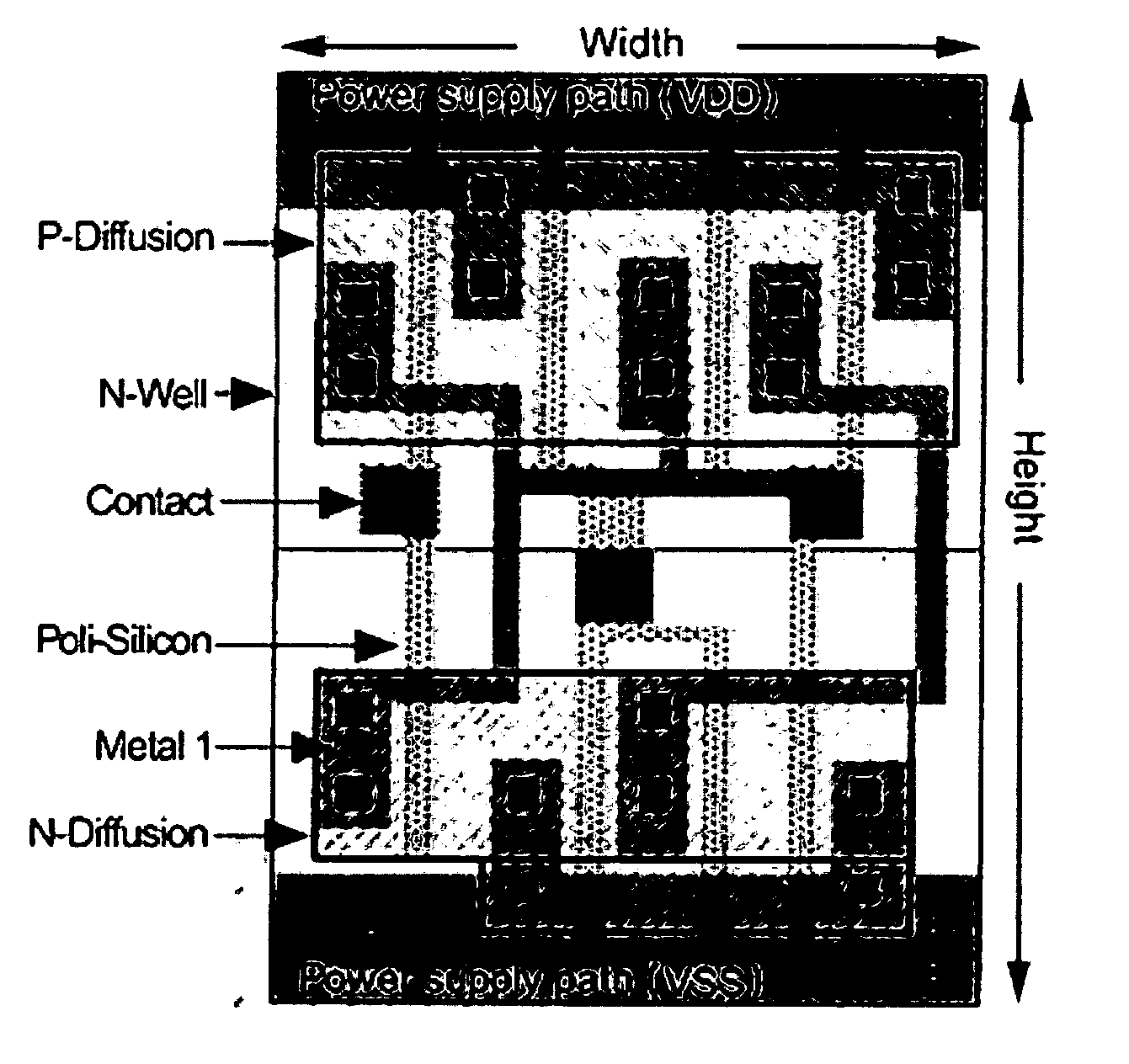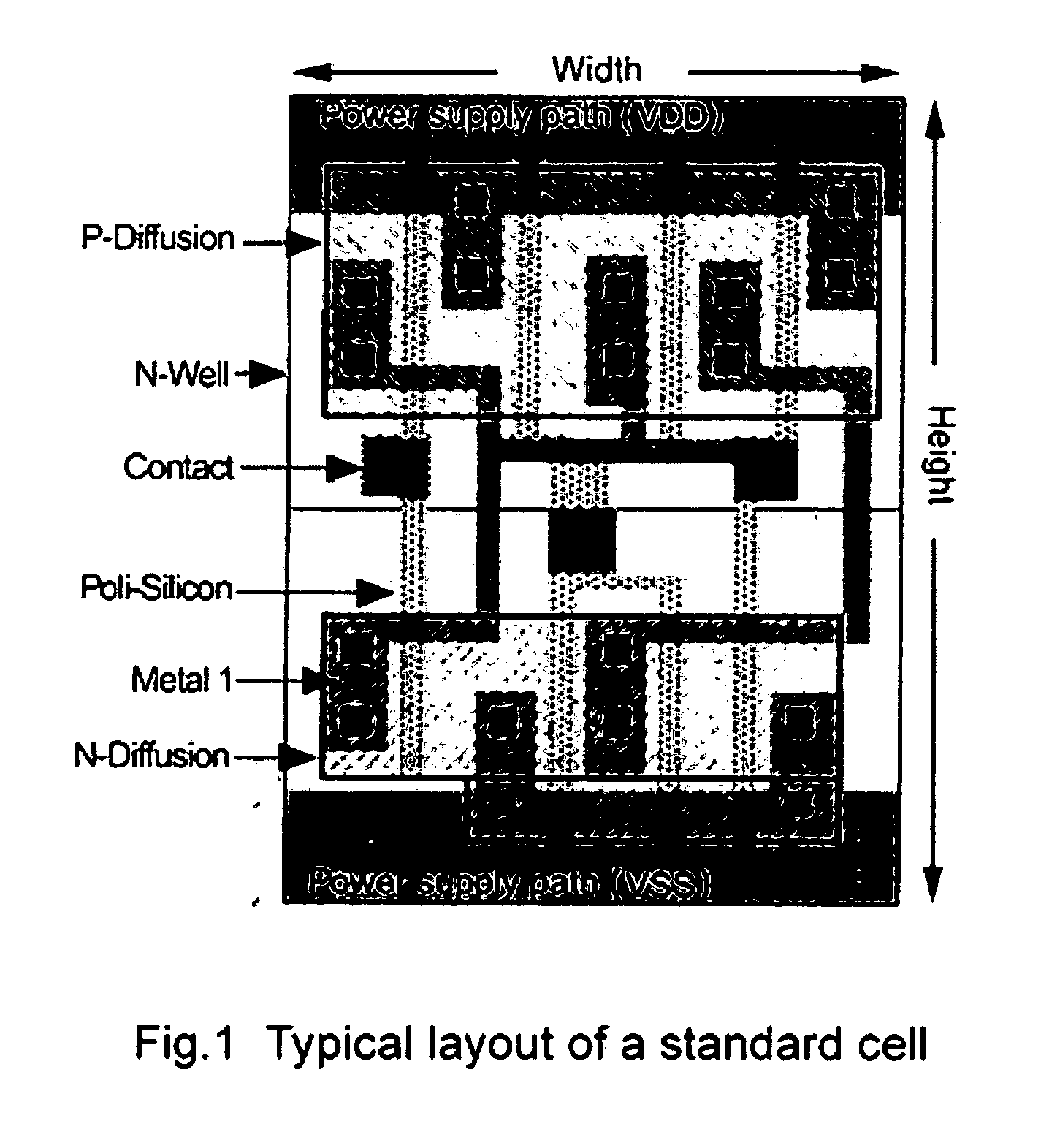Rectangular contact lithography for circuit performance improvement and manufacture cost reduction
a technology of rectifying contact lithography and circuit design, applied in the field of optical lithography, can solve the problems of inability to enforce the physical design constraints of strong-rets imposed on circuit design, the halting of the improvement of optical lithography equipment, and the inability to implement in the past, so as to achieve the effect of minimizing extra costs
- Summary
- Abstract
- Description
- Claims
- Application Information
AI Technical Summary
Benefits of technology
Problems solved by technology
Method used
Image
Examples
Embodiment Construction
[0037]FIG. 1 is a diagram illustrating the structure of a standard cell. Each standard cell in a library is rectangular with a fixed height but varying widths. The cells are placed in rows with overlapping power supply paths. A standard cell typically has an N-well layer, an N-diffusion layer, a P-diffusion layer, a poly-silicon layer, a contact layer, and a metal-1 layer. The N-well, N-diffusion 330, P-diffusion and poly-silicon form P-MOS and N-MOS inside the cells. The poly-silicon also serves as an intra-cell routing path. The contacts 360 form connections between the routing layers and the under layers.
[0038] The height of a cell is typically given as the number of metal-1 tracks over the cells in the height direction. A metal-1 track comprises the metal-1 path and the space between metal-1 paths. The typical height of a standard cell is 10 tracks, where three tracks are used for power supply paths and the remaining seven tracks are for intra-cell design.
[0039] Placing featur...
PUM
| Property | Measurement | Unit |
|---|---|---|
| feature size | aaaaa | aaaaa |
| contact size | aaaaa | aaaaa |
| size | aaaaa | aaaaa |
Abstract
Description
Claims
Application Information
 Login to View More
Login to View More - R&D
- Intellectual Property
- Life Sciences
- Materials
- Tech Scout
- Unparalleled Data Quality
- Higher Quality Content
- 60% Fewer Hallucinations
Browse by: Latest US Patents, China's latest patents, Technical Efficacy Thesaurus, Application Domain, Technology Topic, Popular Technical Reports.
© 2025 PatSnap. All rights reserved.Legal|Privacy policy|Modern Slavery Act Transparency Statement|Sitemap|About US| Contact US: help@patsnap.com



